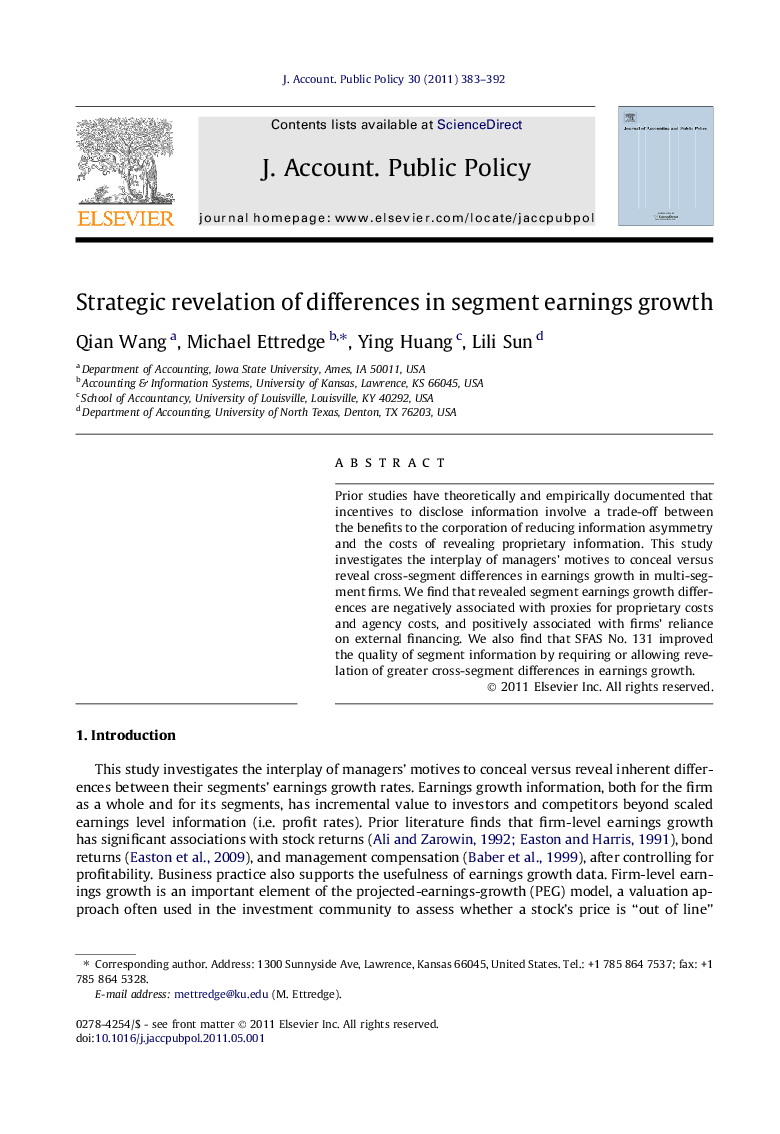| Article ID | Journal | Published Year | Pages | File Type |
|---|---|---|---|---|
| 1005967 | Journal of Accounting and Public Policy | 2011 | 10 Pages |
Prior studies have theoretically and empirically documented that incentives to disclose information involve a trade-off between the benefits to the corporation of reducing information asymmetry and the costs of revealing proprietary information. This study investigates the interplay of managers’ motives to conceal versus reveal cross-segment differences in earnings growth in multi-segment firms. We find that revealed segment earnings growth differences are negatively associated with proxies for proprietary costs and agency costs, and positively associated with firms’ reliance on external financing. We also find that SFAS No. 131 improved the quality of segment information by requiring or allowing revelation of greater cross-segment differences in earnings growth.
► Differences across a firm’s segments in earnings growth rates provide important information to investors and competitors. ► Incentives to disclose information involve a tradeoff between the benefits of reducing information asymmetry and the costs of revealing proprietary information. ► We find that revealed cross-segment variability in growth rates is negatively associated with agency costs and proprietary costs. ► Revealed cross-segment variability in growth rates is positively associated with reliance on external financing and adoption of SFAS No. 131.
